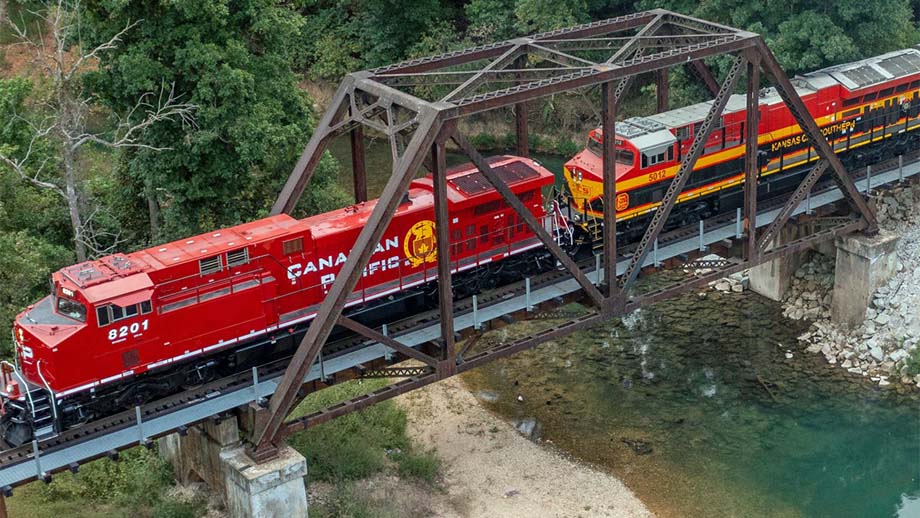
Washington District of Columbia USA - Four railroads have asked federal appeals courts to throw out
a new rule that would require two-person train crews in most circumstances, saying the mandate is arbitrary,
capricious, and an illegal abuse of discretion.
The identical challenges of the Federal Railroad Administration's rule were all filed this week in different appellate
courts on behalf of Union Pacific, BNSF, and two shortline railroads, the Indiana Railroad and Florida East Coast
Railway.
The new federal requirement, announced last week, was a milestone in organized labour's long fight to preserve the
practice and came amid increasing scrutiny into railroad safety, especially in the wake of the fiery February 2023
derailment in eastern Ohio.
Most of those railroads didn't immediately offer additional explanation for why they don't like the rule, but the
industry has long opposed such a regulation, and the Association of American Railroads trade group said last week that
the rule was unfounded and not supported by safety data.
The Indiana Railroad, like many shortlines across the country, already operates with one-person crews, but the major
freight railroads all have two-person crews that their union contracts require.
Union Pacific said in a statement that "this rule, which lacks any data showing two people in a cab are safer than
one, hinders our ability to compete in a world where technology is changing the transportation industry and prevents us
from preparing our workforce for jobs of the future."
BNSF deferred comment to AAR, and the two smaller railroads didn't immediately respond to messages Thursday
morning.
The regulators who announced the rule last Tuesday, and the unions that have lobbied for the policy for years, all
argue there are clear safety benefits to having two people in the cab of locomotives to help operate the train because
they can keep each other alert and the conductor can respond immediately to any problems they encounter, including
serving as the initial first-responder to a derailment.
Transportation Secretary Pete Buttigieg has said the need to improve railroad safety was made glaringly clear last year
when a Norfolk Southern train derailed on the outskirts of a town on the Ohio-Pennsylvania border and spilled an
assortment of hazardous chemicals that caught fire.
That East Palestine derailment inspired calls for reform that have stalled in Congress.
But Buttigieg and the Federal Railroad Administration didn't immediately respond Thursday to the legal challenges to
the new rule that is set to take effect in early June.
Railroads have long argued that the size of train crews should be determined by contract talks, not regulators, or
lawmakers, because they maintain there isn't enough data to show that two-person crews are safer.
Current safety stats can't show how safe one-person crews are because all the major railroads have two-person crews
now.
The new rule does include an exception that would allow shortline railroads to continue operating with one-person crews
if they have been doing it for more than two years and have a plan to ensure safety.
But the rule would make it difficult for any railroads to cut their crews down to one person.
The railroads have often challenged states when they tried to require two-person crews, so it's not a surprise that
they went to court over this new federal rule.
The major freight railroads have argued that automatic braking systems that are designed to prevent collisions have
made the second person in the locomotive cab unnecessary, and they believe a conductor based in a truck could
adequately respond to any train problems.
Plus, they say taking that conductor off the train would improve their quality of life because he or she would no
longer have to work unpredictable hours on the road.
Josh Funk.
(likely no image with original article)
(usually because it's been seen before)
provisions in Section 29 of the Canadian
Copyright Modernization Act.